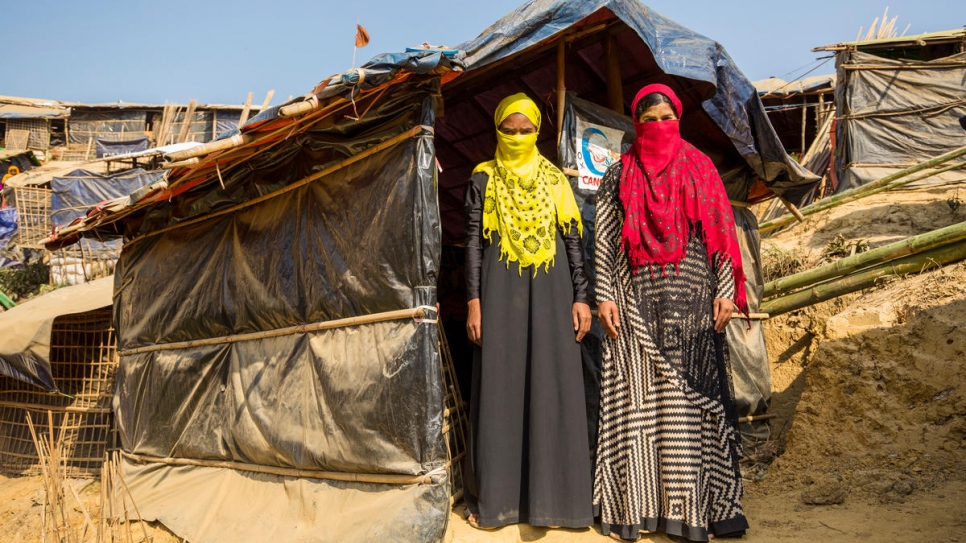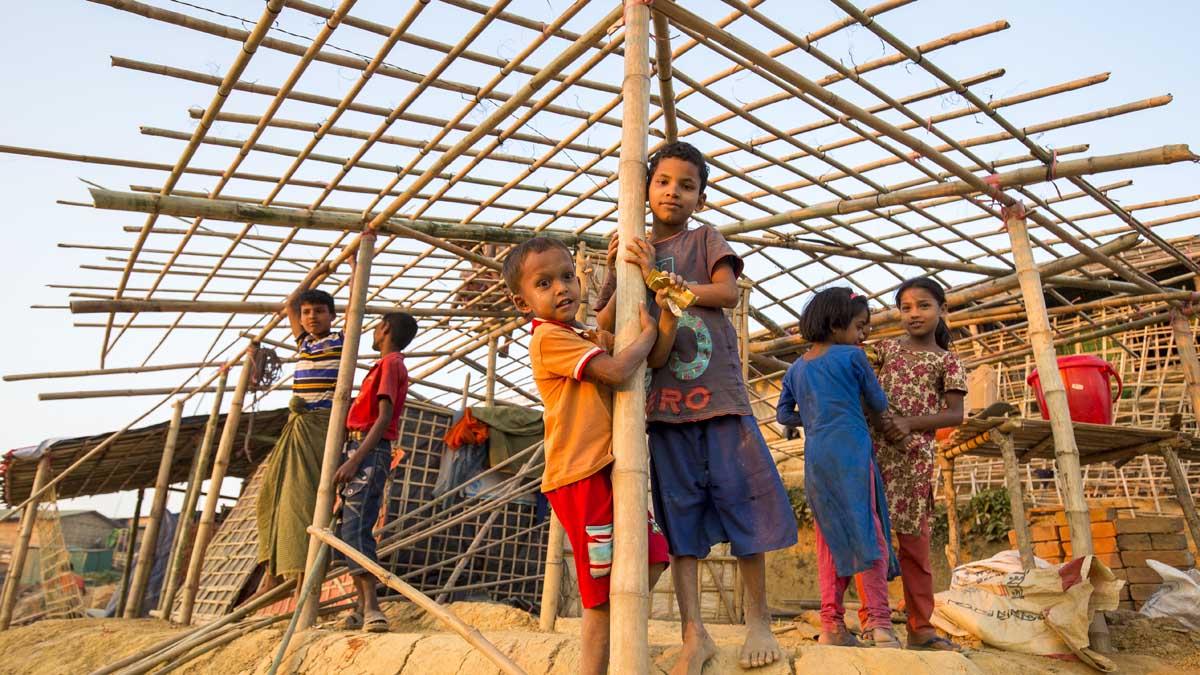The stateless Rohingya minority in Myanmar have been described by the United Nations as “the most persecuted people in the world.” The vast majority of Rohingya refugees reaching Bangladesh during this latest crisis are women and children, including newborn babies. Many others are elderly people requiring additional aid and protection.
Armed clashes across Myanmar continued to trigger displacement and affect civilians. As of 30 May 2022, there were an estimated 1,037,800 internally displaced persons (IDPs) across the country.
The people are facing burnings of homes and villages, house searches, arbitrary arrests, and detention. IDPs and host communities continue to face shortage of food and goods.

Besides, it’s been raining almost continuously since 2018 in the refugee settlements of Cox’s Bazar in Bangladesh. Torrential rains and winds blowing at typhoon-8 level have triggered more than 130 landslides, numerous flash floods and outbreaks of lethal diseases like cholera and malaria. With over 200,000 people are at high risk of landslides, it is feared that the extreme weather will cause further damage, destruction and loss of life.
“The monsoon is coming and I’m scared that the wind will blow away the roof. There are shelters above mine that would fall on us if there is a landslide.” Jhura expressed her fear, who is living in a bamboo shelter built on the side of a steep hill.
You are their hope to protect and save Rohingya people from this calamity.
What is UNHCR doing to help?
UNHCR, the Bangladeshi authorities and our humanitarian partners have been able to work together to respond immediately to this crisis within a crisis. Besides conducting search and rescue operations while relocating threatened Rohingya families to safer grounds, we distributed upgraded shelter kits across all settlements and stored emergency supplies and health kits to supplement our five hospital tents. We also trained 2,000 refugees of both genders in disaster preparedness.
Stronger shelters

We have distributed upgraded shelter kits featuring bamboo poles, ropes, tarpaulin, fixings and sandbags to 83,900 households to fortify existing shelters, and helped the Bangladesh army paved road in the Kutupalong settlement to ensure efficient delivery of assistant.
Improving water supply and sanitation

We have built 3,686 latrines, 894 tube wells and 1,659 bathing cubicles and are completing a new dam to increase refugee’s water allocation to 10 litres a day.
Tackling malnutrition

We have, together with our partners, established 12 malnutrition centres reaching 1,500 children per month, while treating malnourished children through 19 outpatient programmes.
can provide 2 Rohingya families with a Monsoon Emergency Kit with bamboo, tarpaulins and sandbags to reinforce shelters and medical supplies to protect against waterborne diseases
can provide 6 Rohingya families with a Monsoon Emergency Kit with bamboo, tarpaulins and sandbags to reinforce shelters and medical supplies to protect against waterborne diseases
can provide 10 Rohingya families with a Monsoon Emergency Kit with bamboo, tarpaulins and sandbags to reinforce shelters and medical supplies to protect against waterborne diseases




